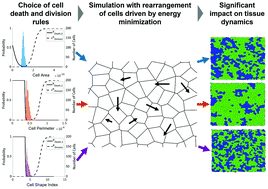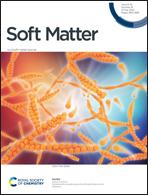Differences in cell death and division rules can alter tissue rigidity and fluidization†
Abstract
Tissue mechanical properties such as rigidity and fluidity, and changes in these properties driven by jamming–unjamming transitions (UJT), have come under recent highlight as mechanical markers of health and disease in various biological processes including cancer. However, most analyses of these mechanical properties and UJT have sidestepped the effect of cellular death and division in these systems. Cellular apoptosis (programmed cell death) and mitosis (cell division) can drive significant changes in tissue properties. The balance between the two is crucial in maintaining tissue function, and an imbalance between the two is seen in situations such as cancer progression, wound healing and necrosis. In this work we investigate the impact of cell death and division on tissue mechanical properties, by incorporating specific mechanosensitive triggers of cell death and division based on the size and geometry of the cell within in silico models of tissue dynamics. Specifically, we look at cell migration, tissue response to external stress, tissue extrusion propensity and self-organization of different cell types within the tissue, as a function of cell death and division and the rules that trigger these events. We find that not only do cell death and division events significantly alter tissue mechanics when compared to systems without these events, but that the choice of triggers driving these cell death and division events also alters the predicted tissue mechanics and overall system behavior.

- This article is part of the themed collection: Soft matter aspects of cancer


 Please wait while we load your content...
Please wait while we load your content...
